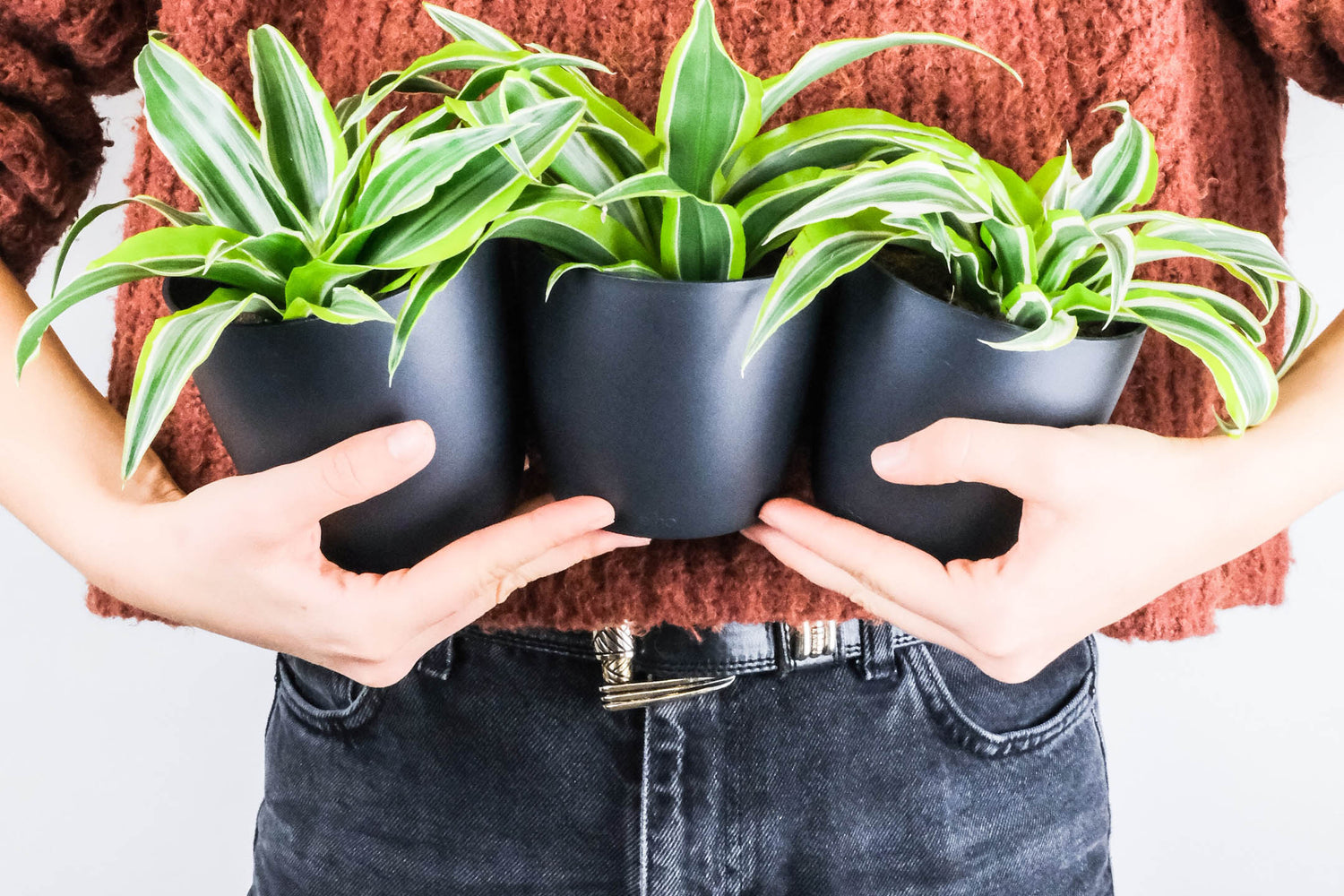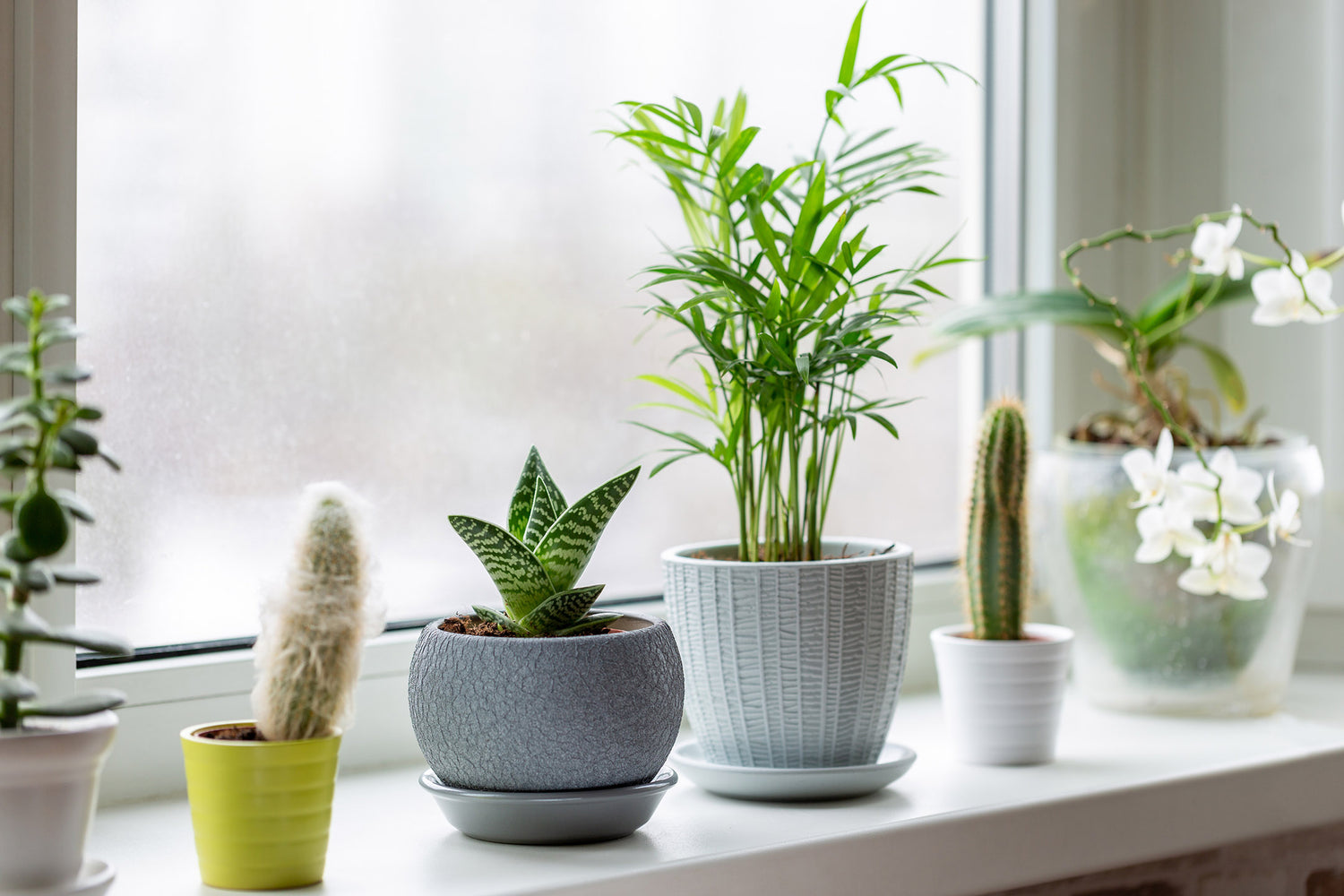Air plants are a stylish addition to your indoor houseplant arrangements. They bring a touch of minimalism to your relaxing areas, home offices, and anywhere in your home.
They are known for being fairly easy to grow for plant parents and can even grow quite large in size if you nurture them with some TLC!
Here at Braid & Wood, we are often asked questions about how to care for air plants. One of the most asked questions is, ‘do air plants need soil?’
So follow our helpful blog and find out the answer!

Shop The Braid & Wood Plant Shelf
Let’s start with the main takeaway first so you can create a relaxing indoor oasis with your favorite air plants.
"Air plants do not need soil and should not be planted in pots as they will not thrive. They are epiphytes and cling to wood, rocks, bushes, and other plants to survive. Trichomes on their leaves help them to hold on to maximum moisture."
So now we’ve got the short answer out of the way, let’s dig in to some more details about air plants.
What Are Air Plants?
Air plants are members of the Tillandsia family, which in turn are a part of the pineapple or Bromeliaceae family.
They are a species of plant which grows natively in South America. There is a huge range to choose from, as there are over 600 known varieties.
So is there a special way that they take in nutrients since they don't need soil to thrive?
Trichomes
The leaves of this intriguing plant have a special coating called trichomes which often give varieties a silvery gray hue. This protective layer helps air plants to obtain moisture from the air around them, including rainfall in their natural habitat.
These attractive exotic species do not need soil to thrive and grow. Instead, it attaches itself to gnarled wood, tree trunks, and even electric pylons. Some varieties grow on rocks or shells. This type is called a lithophyte.

Air Plants Blossom
Air plants will reward your care and love by blossoming sometimes just for a couple of days, and others will keep their flower for a few months. It does depend on the species. Although we would think that most plants need soil to produce flowers it might surprise you to know that air plants can produce flowers in a range of colors from glorious pinks, purples, and reds.

Flowering is the peak of the air plant life cycle and marks the beginning of the plant’s old age. After an air plant flowers, the plant will eventually die.
So now we have the background on air plants and a little more information on exactly what they are, let’s dive a bit deeper into why they don’t need soil.

What Is An Epiphyte?
Air plants are part of a group of plants known as epiphytes. As we found out above, they don’t need soil to grow as they simply cling to other plants and their surroundings to survive.
The epiphytes that you may be the most familiar with, are orchids. There are a few varieties of orchids that do grow in soil, but most of them do not survive planted in soil.
Orchids retain their moisture by absorbing water through a layer of white cells contained in the roots which absorb water like a sponge.
Air plants like orchids do thrive best by taking their nutrients from the air around them, rather than in a pot with soil.
So as we’ve discovered that soil isn’t a requirement for these tropical air living and loving plants, it can be confusing wondering how to give them the care they need!
It’s not surprising that many plant lovers wonder how to care for air plants if they don’t need a home in a pot with some nourishing soil!
We’ve discovered above that air plants hold onto moisture through their leaves, so it’s understandable to think you might not need to water them either, let’s find out the answer below.
Do Air Plants Need Watering?
We know that air plants don't need soil to survive because they don't get their nutrients from the soil, BUT they will still need a drink!
Each variety will have its own watering needs which will also depend on its location.
For best results avoid water softened by filters as the salt might damage delicate air plants. Always use room temperature tap water, or even better rain water.
Air plants can survive without water for up to two weeks, and even though they aren’t planted in soil like traditional houseplants they still need water and sunlight to thrive and be healthy.
By looking at the leaves of your air plants and the type, you can get a good idea of the kind of care they will need.
Air Plant With Smooth, Glossy Leaves

Shop the Braid & Wood V-Hanger
Air plants with smoother, more glossy leaves are the most common types available. These generally hail from a tropical rainforest-type habitat where there is shade from tree canopies, and clouds to deliver plentiful showers of rain.
This type of air plant has fewer trichomes which give them less protection from the sun. This means they dry out more quickly than other varieties. These air plants will require watering twice a week in sunny areas, especially during the warmer seasons.
Air Plants With Fuzzy Leaves

If your air plant is the type that has a slightly more fuzzy type of leaf, it’s most likely they will hail from drier and sunnier climates rather than the rainforest variety. This kind of air plant can tolerate sunnier positions in your home.
This fuzzy look is because they have more abundant trichomes on their leaves which are used to store water for drier periods in their native environment.
This type will only need watering once or twice a week.
So, you might be asking yourself how is it best to water air plants if they aren’t planted in soil?
How Do I Water An Air Plant?
There are a few ways to make sure your air plants are happy, fed, and watered.
- Misting: this is the best way to water those who are mounted inside air globes. Depending on the variety, misting them every other day or every day during hot weather works best. Make sure you mist all their surfaces.
- Dunking: is good for plants that are freestanding or attached to hanging shelves. It also works best for air plants with a more dense curly-leaf which can be hard to water by misting alone. Pop your plant in a bowl filled with tap or rainwater and submerge for around 3 hours if possible. Once a week is perfect, but if you fear you may have been a little neglectful then they will appreciate a longer bath!

Let plants dry off in a well-ventilated area to stop them from becoming waterlogged. Give them extra dunking love in hot weather and a little less frequently once the weather cools a little during fall and winter.
And To Finish On…

So there is the answer you’ve all been waiting for! You won’t often see air plants making their home in pots.
For the best way to display your air plants, pop over to our store to find simple and beautiful wall mounted air plant holder, the perfect forever home for your air plants!





